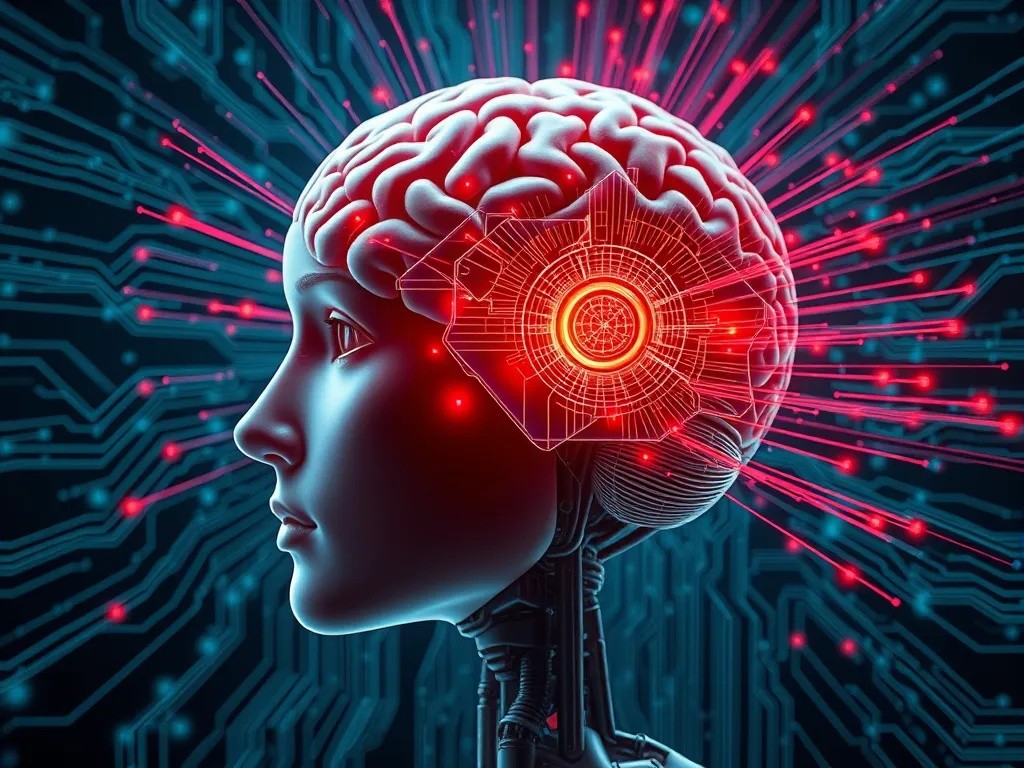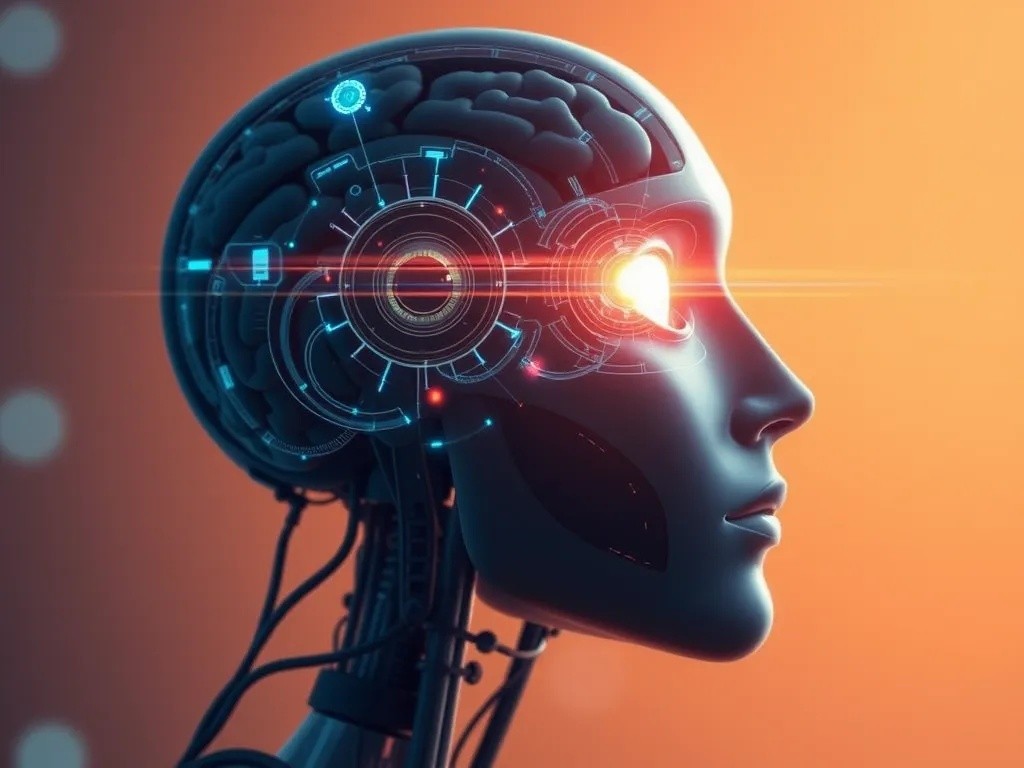In recent years, there has been a significant advancement in the field of Artificial Intelligence (AI) and Augmented Reality (AR). These technologies have become increasingly popular and have the potential to enhance virtual experiences in various fields such as gaming, education, healthcare, and...
Artificial Mind Learned to Read Thoughts by Eye Movements

A groundbreaking fusion of artificial intelligence and neuroscience has achieved what was once relegated to science fiction: machines that can read human thoughts by analyzing eye movements. Recent advances in eye-tracking technology combined with sophisticated AI algorithms are revolutionizing our understanding of the human mind and creating unprecedented opportunities for brain-computer interfaces.
The Window to Our Thoughts
The human eye has long been considered a window to the soul, but modern AI systems are proving it's also a direct pathway to our thoughts and intentions. Researchers at the University of Maryland have developed an AI algorithm called RETINA (Raw Eye Tracking and Image Encoder Architecture) that can accurately predict people's choices before they have even made their decisions. This breakthrough demonstrates that our eye movements reveal far more about our mental processes than previously understood.
Scientists have been investigating how eye movements can help read people's thoughts since the 1960s, but recent advances in artificial intelligence have dramatically enhanced our ability to decode these signals. The technology works by analyzing subtle patterns in how our eyes scan and focus on different elements in our environment, revealing the contents of our short-term memory and decision-making processes.
Revolutionary AI Algorithms
RETINA: Predicting Consumer Behavior
The RETINA algorithm takes mere seconds to predict people's choice behaviors by using eye movement data from participants viewing comparison websites with rows and columns of products and their features. This technology represents a significant advancement in understanding consumer decision-making processes and has broad implications beyond marketing applications.
Neural Pattern Recognition
German researchers discovered that eye tracking can help pinpoint where someone is in their thought process, revealing that our eyes switch between different patterns of movement in response to thinking processes. The research identified two distinct modes: ambient mode, where eyes roam quickly over long distances to gain spatial orientation, and focal mode, where we focus on information for longer periods during deeper processing.
Beyond Eye Tracking: Brain-Computer Interface Integration
Multi-Modal Approaches
The most advanced systems combine eye tracking with other neural signals to create comprehensive mind-reading interfaces. Recent investigations have introduced hybrid brain-computer interfaces that utilize both EEG and eye movement signals for controlling unified systems of wheelchairs and robotic arms. These systems merge motor imagery with eye movement data, allowing precise control over external devices.
Medical Applications
For patients with conditions like locked-in syndrome or ALS, BCI technology provides innovative communication solutions by utilizing EEG or other non-invasive sensors to interpret user intentions and translate them into commands for external devices. Recent advancements include integration of eye-tracking systems with sophisticated Hidden Markov Models and Deep Neural Networks, significantly enhancing the precision of character recognition and input speed.

Decoding Mental States and Personality
Researchers from the Max Planck Institute for Informatics have developed a software system that can draw conclusions about personality traits by using artificial intelligence to evaluate eye movements. The system can analyze how neurotic, agreeable, extroverted, and conscientious test subjects are, as well as their degree of curiosity, demonstrating that eye movements truly are "a window into our mind."
Technological Breakthroughs in 2024-2025
High-Density Neural Arrays
Precision Neuroscience's breakthrough Layer 7 Cortical Interface, featuring 1,024 electrodes, has provided unprecedented access to neural oscillations in the motor cortex, revealing new information about how the brain encodes movement. This technology captured previously inaccessible neural patterns related to movement, offering insights that could reshape neurological treatment.
Real-Time Processing Capabilities
Scientists can now measure brain activity using magnetic resonance imaging while precisely tracking eye movements, with new software using artificial intelligence to directly predict eye position and movements from MRI images. This development opens up rapid and cost-effective research and diagnostic possibilities, particularly for neurological diseases that manifest as changes in eye-movement patterns.
Current Challenges and Limitations
- Accuracy Constraints: While promising, current prediction systems are not yet accurate enough for all practical applications, though continuous improvements are being made.
- Individual Variability: Eye movement patterns vary significantly between individuals, requiring personalized calibration for optimal performance.
- Privacy Concerns: The ability to decode mental states without explicit awareness raises important ethical questions about cognitive privacy.
- Technical Limitations: Processing eye movement data has traditionally been laborious, though new algorithms are addressing this challenge.
Future Implications and Applications
Medical Rehabilitation
The technology shows tremendous promise for patients with paralysis, stroke, or neurodegenerative diseases. Eye movement brain-machine interfaces can assist patients locked-in from stroke or neurodegenerative disease who are unable to make any movements including eye movements.
Enhanced Human-Computer Interaction
Eye-tracking interfaces are being developed to monitor, assess, and control higher brain functions without acquiring signals directly from the brain, offering a less invasive alternative to traditional brain-computer interfaces. These "CyberEye" applications encompass emerging cognitive applications for neuroscience research, clinical practice, and the biomedical industry.
Broader Technological Integration
Researchers believe eye tracking will become available at very large scales, with potential applications that haven't even been thought about yet. As processing capabilities improve and the technology becomes more accessible, we may see integration into everyday devices and applications.
Conclusion
The convergence of artificial intelligence and eye-tracking technology represents a paradigm shift in how we understand and interact with the human mind. From predicting consumer choices to restoring communication for paralyzed patients, these systems are demonstrating that our eyes truly are windows not just to our souls, but to our thoughts, intentions, and mental processes. As the technology continues to evolve, we stand on the threshold of a new era where the boundary between human cognition and artificial intelligence becomes increasingly permeable, offering both unprecedented opportunities and important ethical considerations for society to navigate.



